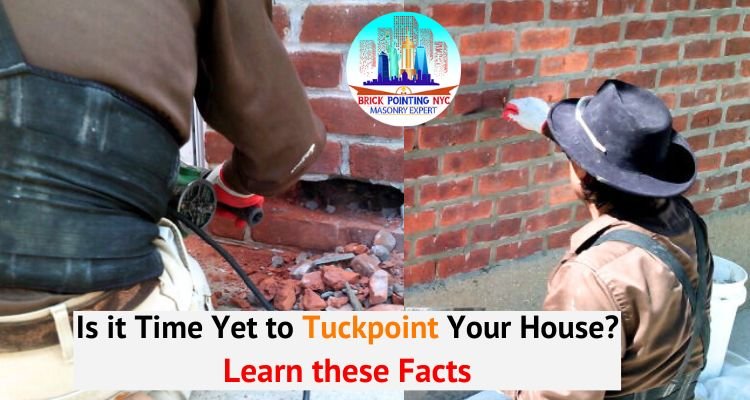Bricks can last for centuries with occasional maintenance. The regular wear and tear can make it fragile and damaged over time. So, tuck pointing NYC becomes a prerequisite to preserve its functionality and aesthetic value. Nonetheless, as property owners, we often ignore the proper upkeep of our house which comes with regular inspections and repair jobs.
Tuck pointing is one such mandatory brick maintenance job which must be performed every 25 to 30 years. Though a time-consuming process, it is affordable and assures you enhanced longevity.
To many of the readers out there, you may be unaware of tuck pointing repair or when to do it. In this blog, we will highlight significant facts about tuckpointing, which will help you understand its necessity. Before that, let us start with the basics of tuckpointing.
Tuckpointing: The Road to Restoring Brickwork
Though bricks are highly durable, the mineral bonds between them do not last long. Mortar which is the binding agent in brickwork is susceptible to early damage. So, tuck pointing NYC is needed to fix mortar damage.
What is tuckpointing?
Tuckpointing is the process of removing deteriorated mortar and placing new mortar with a mortar gun or pointing trowel. The new mortar is forced through the joints to a consistent depth. The excess mortar is then removed and the surface is smoothened. Tuck pointing services propose a structurally strong and aesthetically pleasant brick construction.
You get a stable, compact, and sound building with a tidier appearance. Therefore, tuckpointing is an effective way to restore a building’s health and curb appeal.
When Do You Need Tuckpointing?
Constructions located in hot and humid climate conditions require more frequent tuckpointing. If you are doubtful whether your house needs tuckpointing, then check out for the following signs of damage. You will know if it is time yet!
- Eroded Mortar- Mortar erosion is the primary cause, necessitating tuck pointing NYC. When erosion occurs more than ¼ inches in the mortar, the joints become unstable. Bricks may often come off, and the overall structure loses its strength and integrity. You cannot prevent erosion, but you can repair the damage by taking immediate measures.
- Crumbling Mortar- Weak mortar is brittle. It crumbles with the slightest force. This is a severe concern because crumbling mortar often results in structural failure. Your house may collapse if you do not consult brick tuckpointing contractors promptly.
- Cracks in Mortar- Mortar can crack due to temperature fluctuations, stress, and physical impact. Cracks lead to water seepage into the inner surfaces. So, you may experience water damage like leaks, dampening, mold and mildew, and fading or peeling paint. These are signs of critical threats you must not ignore. Cracks should not be left untreated for prolonged periods as they result in catastrophic consequences.
- Void in Mortar- If you notice empty spaces between joints, it means there is missing mortar. The mortar joints disintegrate over time, resulting in void spaces. What do you think will be the outcome? Ideally, pieces of mortar will go missing as they come off easily. So, you have empty joints requiring tuck pointing NYC by an expert.
- Organic Growth- Vines and foliage growth are common in brickwork. The roots of such plants create cracks and gaps in mortar joints. They gradually expand, resulting in greater concerns. Apart from the cracks, you may often notice mortar disintegration as well. The roots are strong enough to cause havoc.
To Conclude
Tuckpointing is an effective way to control damage and restore a building’s structural functionality and curb appeal. It is considered an indispensable element to prolong the life of your property.


